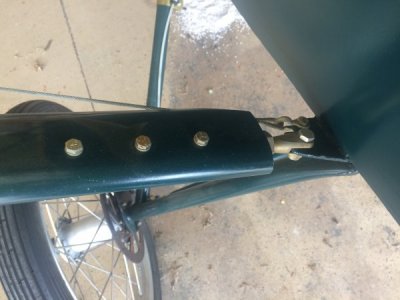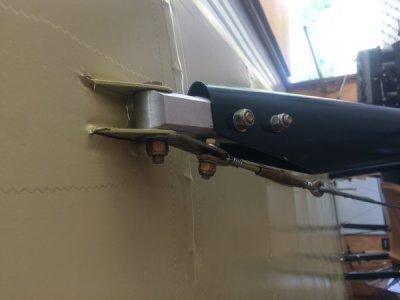- Joined
- Oct 27, 2013
- Messages
- 124
Hi Folks!
I have an interesting hole locating task ahead. A buddy damaged a strut on his 1929 design homebuilt experimental parasol aircraft.


Originally it looks like the inch plus thick fittings were match drilled with the thin 4130 steel struts that sleeve over the top of the fittings. Although the replacement strut material' inside dimension isn't an exact match with the original nor the fittings, we don't want to have to completely re-machine the fittings. So we just plan a surface skim in the mill until the old fittings can be sleeved by the new, slightly narrower (.020?) strut material. We'll block and shim the wing into the same incidence and sweep location relative to the fuselage that it originally occupied, but how do we then locate and use the existing holes in the fittings and transfer those holes to the new strut tube ends? Keep in mind the aerodynamically oblong shape of the strut material. There is not really any way to reference much other than widest and narrowest points, so measuring and laying out center points is a guess at best, but may be our only option. Is there a better way?
I have an interesting hole locating task ahead. A buddy damaged a strut on his 1929 design homebuilt experimental parasol aircraft.


Originally it looks like the inch plus thick fittings were match drilled with the thin 4130 steel struts that sleeve over the top of the fittings. Although the replacement strut material' inside dimension isn't an exact match with the original nor the fittings, we don't want to have to completely re-machine the fittings. So we just plan a surface skim in the mill until the old fittings can be sleeved by the new, slightly narrower (.020?) strut material. We'll block and shim the wing into the same incidence and sweep location relative to the fuselage that it originally occupied, but how do we then locate and use the existing holes in the fittings and transfer those holes to the new strut tube ends? Keep in mind the aerodynamically oblong shape of the strut material. There is not really any way to reference much other than widest and narrowest points, so measuring and laying out center points is a guess at best, but may be our only option. Is there a better way?

